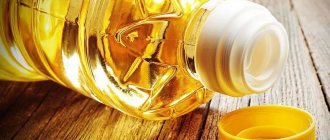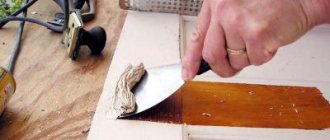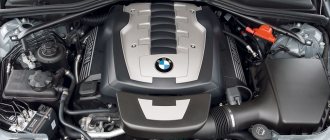Plastic is now a common material in everyday life. It is used to produce window frames, car parts and interiors, components of household appliances and furniture. In connection with this, when carrying out repair, painting and restoration work, sometimes it becomes necessary to remove old paint or accidentally stained fresh paint from a plastic surface. Let's discuss in detail how to remove paint from plastic.
Features of removing paint from plastic
Features of cleaning the surfaces of plastic objects are associated with the following points:
- Polymers are sensitive to mechanical stress. When using hard brushes or abrasive powders, scratches appear.
- Under the influence of certain aggressive substances, the plastic begins to melt. This not only spoils the appearance, but also contributes to the deterioration of the performance of the items.
- Polymer products cannot be heated to temperatures above +80 °C. The item loses its original shape and becomes unusable.
- In most cases, only a special wash helps get rid of dirt. It is sold in construction stores.
Methods for determining the type of plastic
Some types of polymers are sensitive to solvents. The types of paint removers used are selected taking into account the composition of the plastic base. For example, traces of paint from polycarbonate can be removed with gasoline or ethyl alcohol. And to clean PET products you can use white spirit.
When purchasing a special remover, check what type of plastic it is intended for from the seller or on the composition label.
There are several methods to help determine the type of polymer. Before removing paint from plastic, perform the following procedures:
- Study of markings. To classify plastics used for household purposes, digital designations are provided. They are indicated on the bottom of the product in a triangle. The number “1” denotes PET, “2” - high-density polyethylene, “4” - low-density polyethylene. Polypropylene items are marked with the number “5”. The number “6” marks polystyrene products, “3” – PVC.
- Burning a plastic element. Each material burns differently. Burning PET (polyethylene terephthalate) produces acrid black smoke. Polyethylene burns with an even blue flame without forming soot. At the same time, the smell of paraffin is felt. Polypropylene gives a bluish flame without smoke. The straightened mass forms long threads. Polystyrene produces a smoky, bright flame and releases large soot particles into the air. When burned, PVC quickly extinguishes and emits acrid smoke. Polyamide gives off the smell of burnt hair. Fluoroplastic does not burn, but chars. Polycarbonate emits a sweetish odor.
- Immersion in liquid. This is a safer method than burning. The item being tested is immersed in a basin of water. Polypropylene and polyethylene are characterized by low density. They float on the surface of the water. PTFE sinks quickly. PVC and PET sink to the bottom more slowly. Polystyrene or polyamide stays on the surface for a long time.
Immersion in water is a simple and easy way to determine the type of plastic.
Correct determination of the type of polymer eliminates damage to the surface during processing.
Recommendations from experts
It is necessary to select a suitable product taking into account the type of plastic and the type of paint with which it is coated. Work with chemicals is carried out only with products that protect the skin, respiratory tract and eyes. Do not rub the surface excessively to avoid damaging it. When cleaning electrical appliances with a plastic case, it must be disconnected from the network in advance. After cleaning, a minimum of 2 hours must pass before the equipment is reconnected to the network.
Work with chemicals is carried out only with products that protect the skin, respiratory tract and eyes.
The listed methods can effectively remove traces of paint from a plastic surface. But as a result of careless handling, it can be damaged. To prevent this from happening with a special plastic product, it is recommended to consult a specialist and select professional products.
Surface cleaning methods
Chemicals are used to remove old stains. They even use liquids that are not intended for cleaning, for example, industrial alcohols.
Mineral solvents are suitable for most types of plastic.
Acetone and ammonia
Acetone (or nail polish remover, an acetone-based solvent) and ammonia help to remove paint from plastic.
To do this, perform the following steps:
- Treat the stain with acetone using a cloth. Wet the sponge with ammonia.
- Wipe the contaminated surface with the product. Leave the mixture for a few minutes.
- Rinse the surface with water and dry.
The solvent may not work the first time. In this case, all steps are repeated.
Brake fluid
With this product you can remove paint using the immersion method. To remove the old coating, a polymer object is immersed in brake fluid and left for half an hour. After this, the dirt is removed with a toothbrush, and the surface is washed with water. If the required amount of brake fluid is not available, apply it to the object with a rag.
brake fluid is a universal paint remover suitable for any type of plastic
Wash
To remove acrylic, water-based, oil-based or any other permanent paint, you can use a specialized solvent, for example, Body 700 or Kudo. Work with liquid in a well-ventilated area using a respirator.
Using a remover, paint is removed from plastic as follows:
- Prepare the selected liquid by pouring it into a basin. Keep the product in the liquid for 4-5 hours.
- After the coating begins to peel off, it is removed with a brush. Wash off any remaining material with water.
If it is not possible to use the immersion method, the selected product is applied with a brush. In this case, do not allow the composition to dry out. Otherwise, you won't be able to remove the paint.
Popular removers suitable for plastic surfaces
When choosing a wash, pay attention to its purpose, because... There are compounds that are not suitable for working with one type of plastic or another. Thus, specialized removers for paint from wood in the case of plastic may not be effective or may damage the surface.
Mole
Drain clearer is often used to remove acrylic-based paint.
It is applied to the contaminated object and left for half an hour. Remove the dissolved coating with a brush.
Methanol
Methyl alcohol is a toxic substance that helps quickly clean a polymer object from its decorative coating. When working with methanol, use a mask and gloves. The room should be well ventilated. The procedure will be the same as when using a wash. Recommended exposure time is 15 minutes.
White Spirit
A degreaser often acts as a universal solvent.
To remove paint with white spirit, perform the following steps:
- apply liquid to the stain;
- leave the solvent for 15 minutes;
- remove the melted coloring agent with a brush;
- wash the surface.
Preparatory stage
At the preparatory stage, the composition and type of paintwork material that will be washed off is determined. This will help, for example, to easily remove water-based dye. The surface covered with water emulsion heats up to 60-75 degrees. The ambient temperature in the room should not be low. Otherwise, the paint can be removed easily and quickly, and the plastic will deform due to temperature differences. Other types of dyes cannot be removed by heating.
- Before removing paint from plastic, the surface is cleaned of dirt and dust.
- Prepare a respirator or gauze bandage, several cotton swabs, and brushes.
The work is carried out in compliance with safety rules. Rubber gloves are put on your hands. Chemicals can damage the skin. The room is ventilated to avoid inhaling toxic fumes.
Sequence of actions for removing paint from plastic
Standard instructions for removing paint from a polymer product include the following steps:
- Chemical exposure. At this stage, the object is immersed in the solution and kept for the time specified in the instructions. To remove small stains, other application methods are used - using a sponge or rag. The easiest way to clean polystyrene is. Caustic soda or potassium is suitable for this. The wash is poured into a transparent container into which the object being treated is immersed.
- Mechanical impact. After a few hours, the paint swells and begins to peel off the surface. At this stage, use a brush or sponge.
- Removing solvent residues. To do this, the item is washed for a long time under running water.
Useful tips
- To reduce the cost of effort and time in the process of removing water-based paint, you need to apply all of the above tips from experts, since amateur efforts can lead to damage to expensive materials.
- Apply water to the paint in small areas, as it is impossible to clean the entire wall at once. Softened paint that you have already treated may dry out again before the process is complete.
- If during work paint accidentally gets on furniture, clothes or carpets, it must be wiped off immediately. Delay may cause difficulties during cleaning in the future.
- If paint gets on clothes, use paper and water. The solvent should be used only in extreme cases.
Features of removing various paints
Each type of finishing material has its own methods.
What is more effective for water-based paint?
To remove paint stains, the following removal methods are used:
- Fresh stains are removed with a soap solution. To do this, add dishwashing detergent, grated soap, and washing powder to a bucket of water. The composition is left on the surface for half an hour and washed off.
- Dried stains are soaked with hot water. The procedure is repeated several times. The stain is wiped off with a clean rag.
- A thick layer of paint is removed with a special solvent, for example, SYNTILOR Hard. It is used in accordance with the instructions. The problem area is treated with cotton wool or a rag soaked in the remover.
- Silicone sealant is used to remove the decorative layer from volumetric parts. The product is applied to contaminated areas. It dissolves the paint, which is then easily removed with a brush.
The best methods for removing acrylic compounds
Acrylic-based paint cannot be removed with water or heat.
In such a situation, only a special wash, for example Kudo, helps. The product quickly removes even thick decorative coatings from plastic elements.
How to remove acrylic varnish?
Acrylic varnish is often used in construction for finishing work. It is in great demand among needlewomen and designers for finishing surfaces. The varnish performs both a protective and decorative function.
In the process of work, sometimes troubles happen. So it can get damaged, the artist waves his brush carelessly... One moment and a spot of acrylic varnish turns out to be completely different from where it was intended. Or maybe the designer was simply dissatisfied with the result and wants to start work from scratch. In all these cases, the question arises: how to clean acrylic varnish.
Possible difficulties
Difficulties arise when searching for an answer to the question of how to wash products of non-standard shapes. The surface relief does not allow the use of common cleaning methods. Liquid glass (an aqueous alkaline solution of sodium silicates) helps solve the problem. It loosens the decorative layer, which is then removed mechanically.
If this does not help, scrape off the old coating with a blade, knife or sandpaper. Hardened paint is often removed along with the top layer of plastic. A radical cleaning method may render the item unusable.
Nothing helps - what to do?
If chemical compounds do not cope, you should turn to silicone sealant. When it turns out to be useless, only radical methods remain. To do this, use sandpaper, various knives and blades. Mechanical paint removal may damage the surface.
If chemical compounds do not cope, you should turn to silicone sealant.
First hour after coating
If no more than 60 minutes have passed since the dye was applied to any surface, there should be no problems with washing it off. You need to “arm yourself” with an ordinary sponge, soap and water. The stain is thoroughly wiped, then you need to wait about 20 minutes and rinse it under running water.
Which is better: heated floors or radiators?
Warm floorBatteries
If the layer has already begun to dry out, you can add a little baking soda. Thus, you can understand that acrylic paints are washed off with water only when the stain is very fresh.
Mechanical method
This cleaning option is suitable for removing the water-based paint layer from walls. The complexity of the procedure depends on how old the paint is. To fix it, you need to take several step-by-step actions:
- Wipe the walls with a damp cloth to slightly soften the paint layer.
- Leave the surface for 15-20 minutes to allow the coating to swell slightly.
- Then carefully remove the layer of water-based emulsion using a metal spatula.
Before you clean the wall in this way, you need to take care of the cleanliness of the floor. To do this, cover its surface with oilcloth. Otherwise, wet pieces of paint falling on the floor may leave marks on it.
Removing water-based emulsion from surfaces mechanically Source kraski-net.ru











